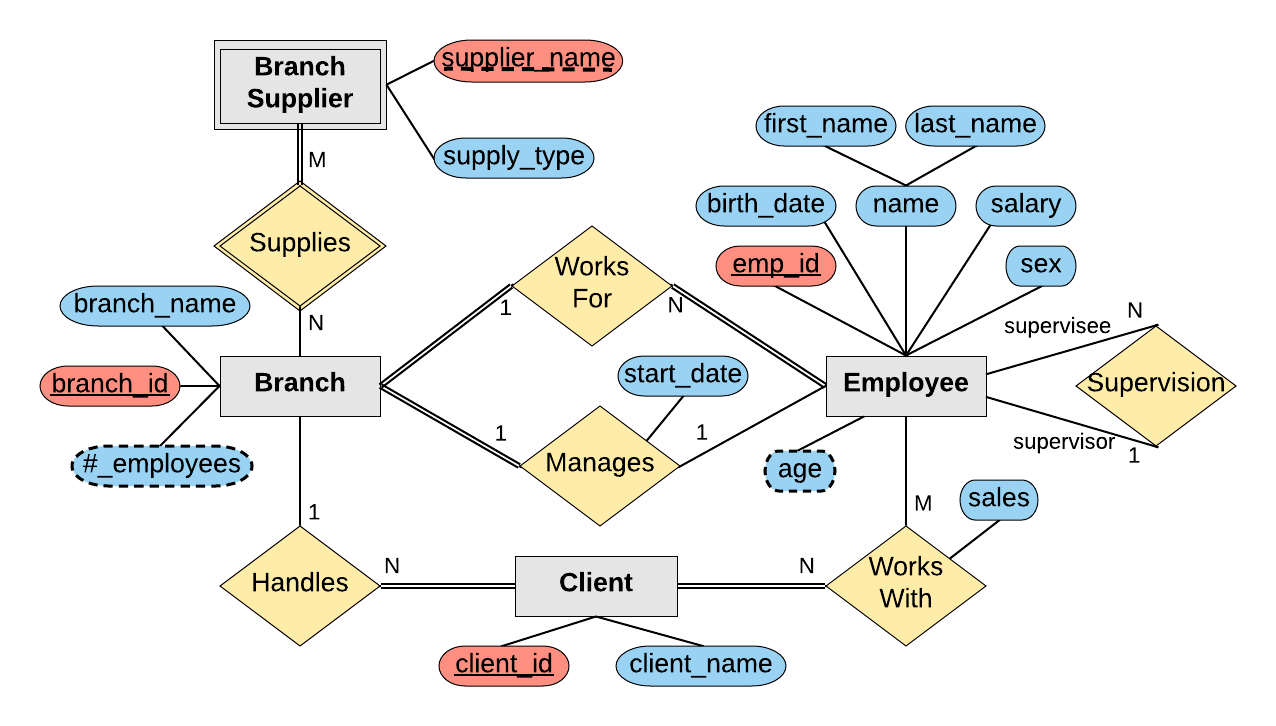SQL syntax
Included here are some notes I jotted down while watching this SQL tutorial from freeCodeCamp. Kudos to freeCodeCamp, which offers the best free resources to self-taught developers. - Haowen Jiang
Comments
Data types
Creating tables
- Create a table
- Describe a table
- Delete a table
- Create a column in a table
- Delete a column from a table
Inserting data
- Insert a row
Updating and deleting data
- Update all instances of one value with another under a condition
- Update all instances of two values with one under a condition
- Update multiple columns of a row under a condition
- Delete a specific row
Basic queries
- Select all columns
- Select specific columns
- Select specific columns (another way)
- Order by a column in ascending order (by default)
- Order by a column in descending order
- Order by multiple columns
- Limit the results by a number
- Filter the results by a comparison operator
- Filter the results by comparing against a list
- Give an alias to a column
- Select distinct values in a column
- Summary formula
Built-in functions
The schema for the company database
COUNT()
- Count the number of rows in a column
- Count the number of female employees born after 1970
- Count the number of male and female employees
AVG()
- Find the average salary of male employees
SUM()
- Find the total salary of employees
- Find the total sales of each employee
Wildcards
-
%: for any number of characters, equivalent to*in Regex -
_: for a single character, equivalent to.in Regex -
Find any employee whose last name ends with
son
- Find any employee born in September
Union
-
Two constraints with
UNION:- The number of columns has to match.
- The data types have to match.
-
Find a list of all client names and supplier names
Join
Inner join
- Find all branches and the names of their managers, and include only employees that manage a branch
Left join
- Find all branches and the names of their managers, and include all employees
Right join
- Find all branches and the names of their managers, and include all branches
Nested queries
- Find names of all employees who have sold over 30K to a single client
Trigger
- Create a trigger in the SQL terminal
-
What the trigger above does is that whenever a new row is inserted into the
employeetable, a fixed message will be inserted into thetrigger_testtable. -
Another trigger, but with more conditions
-
What the trigger above does is that whenever a new row is inserted into the
employeetable, a different message will be inserted into thetrigger_testtable depending on the sex of the newly inserted employee. -
Delete a trigger in the SQL terminal
Entity relationship diagrams
- Entity: e.g.
student- Weak entity: an entity that cannot be uniquely identified by its attributes alone, e.g.
exam, which is not independent fromclass
- Weak entity: an entity that cannot be uniquely identified by its attributes alone, e.g.
- Attribute: features about an entity, e.g.
student_id,gpa- Composite attribute: attribute that consists of multiple attributes, e.g.
nameconsisting oflast_nameandfirst_name - Multi-valued attribute: attribute that has multiple values, e.g.
clubs, whose values might beguitar,dancing, etc. - Derived attribute: attribute that can be derived from other attributes, e.g.
has_honors, which can be derived fromgpa
- Composite attribute: attribute that consists of multiple attributes, e.g.
- Relationship: a relationship between two entities, eg.
studentholds the relationshiptakeswithclass.- Partial participation: e.g. only some students take a specific class
- Total participation: e.g. all classes are taken by at least a student
- Relationship attribute: attribute about a relationship, e.g.
gradein thetakesrelationship betweenstudentanndclass - Relationship cardinality:
- one-to-one: 1:1
- one-to-many: 1:N
- many-to-one: N:1
- many-to-many: N:M
- Identifying relationship: a relationship that serves to uniquely identify a weak entity, e.g.
hasbetweenclass, a normal entity, andexam, a weak entity
Postscript
Not until I finished writing the notes above did I find this page, where Mike Dane, the instructor, already created a nice-looking page for all the SQL syntax covered in this tutorial.


